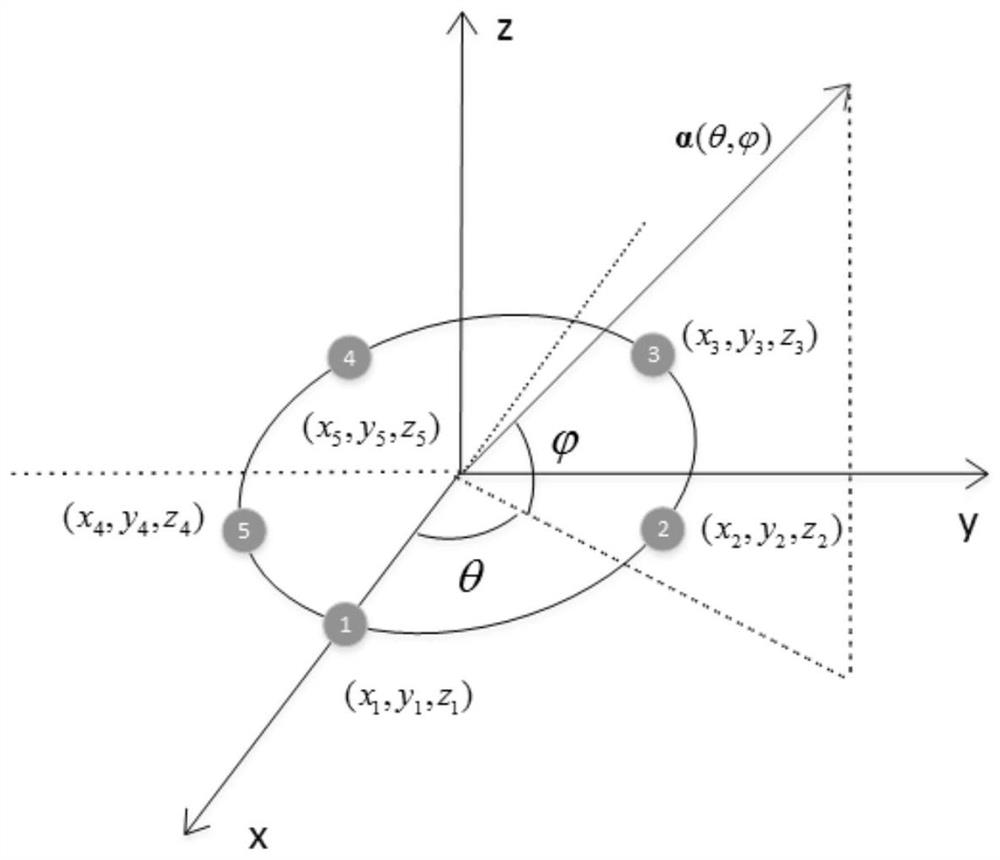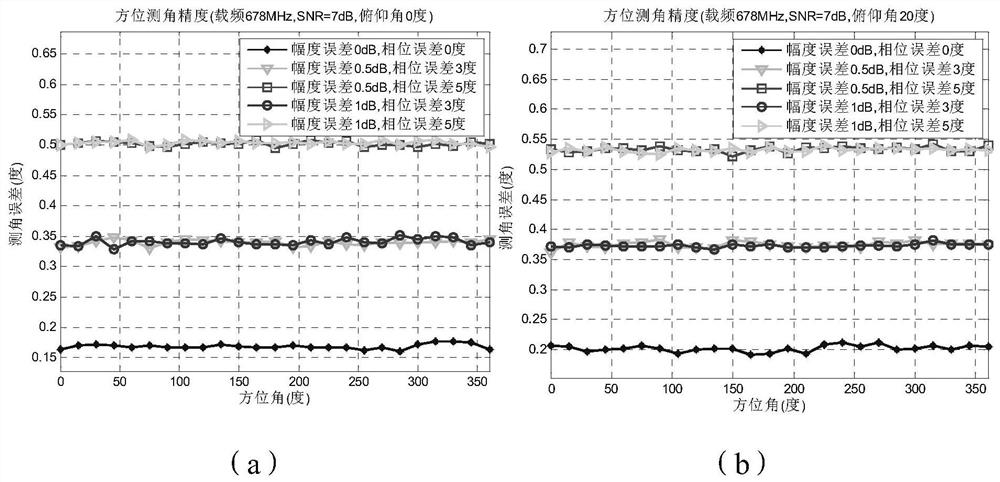Direction finding method for communication between a multi-antenna radio station and an unmanned aerial vehicle based on maximum likelihood
A technology of maximum likelihood and radio stations, which is applied in direction finders using radio waves, radio wave direction/deviation determination systems, etc., and can solve problems such as high side lobe fluctuations and a small number of array element antennas
- Summary
- Abstract
- Description
- Claims
- Application Information
AI Technical Summary
Problems solved by technology
Method used
Image
Examples
Embodiment Construction
[0030] Embodiments of the present invention will be described in detail below in conjunction with examples, but those skilled in the art will understand that the following examples are only used to illustrate the present invention, and should not be considered as limiting the scope of the present invention.
[0031] refer to figure 1 , a kind of direction finding method based on maximum likelihood multi-antenna radio station and unmanned aerial vehicle communication provided by the present invention, comprises the following steps:
[0032] Step 1, calculate and store the array flow pattern offline: Divide the azimuth angle measurement range [0, 360°] into P discrete azimuth angles, divide the pitch angle measurement range Divided into Q pitch angles to form a P×Q discrete grid; according to the coordinates of the antenna (x n ,y n ,z n ) and the direction vector of the communication signal Get discretized array flow pattern A 1 ,...,A q ,...,A Q ;
[0033] in, is t...
PUM
 Login to View More
Login to View More Abstract
Description
Claims
Application Information
 Login to View More
Login to View More - R&D
- Intellectual Property
- Life Sciences
- Materials
- Tech Scout
- Unparalleled Data Quality
- Higher Quality Content
- 60% Fewer Hallucinations
Browse by: Latest US Patents, China's latest patents, Technical Efficacy Thesaurus, Application Domain, Technology Topic, Popular Technical Reports.
© 2025 PatSnap. All rights reserved.Legal|Privacy policy|Modern Slavery Act Transparency Statement|Sitemap|About US| Contact US: help@patsnap.com



